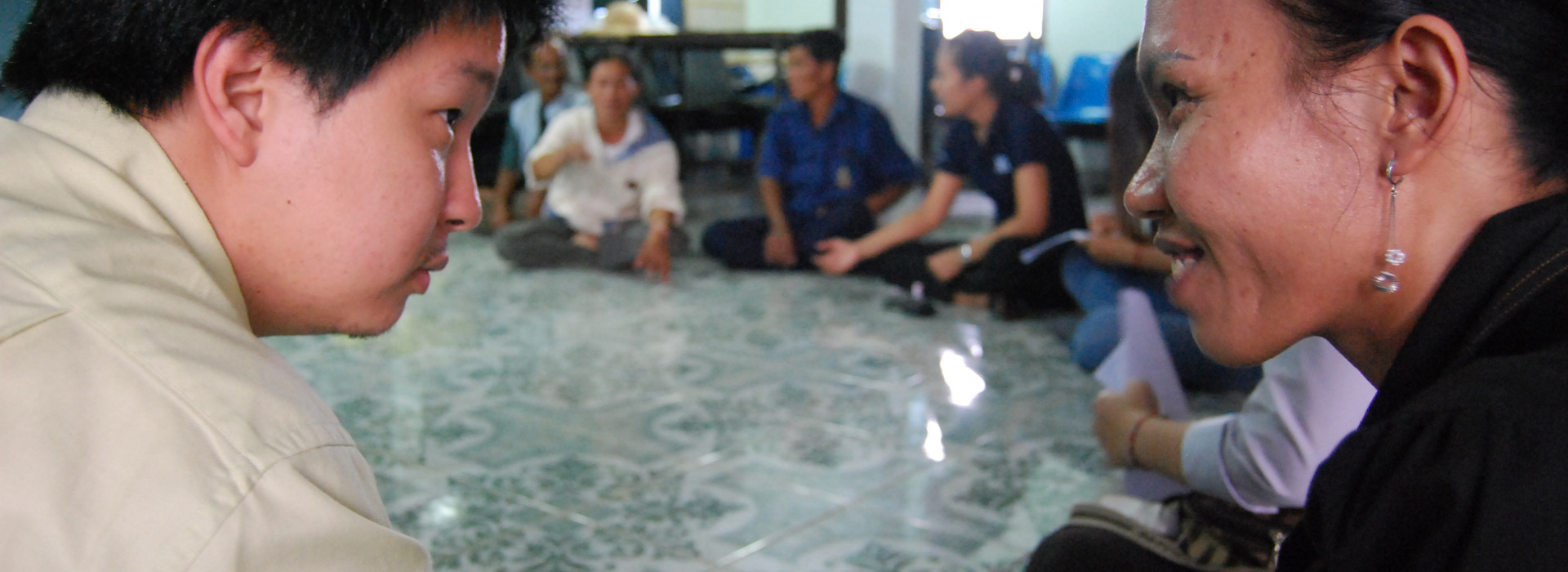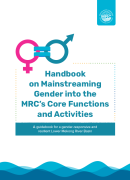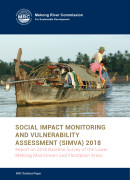
Gender
Gender equity is critically important for sustainable development in the Mekong River Basin. Gender-inclusive development strategies contribute significantly to economic growth, poverty reduction, and to equity objectives by ensuring that everyone receives a fair share of development benefits.
Both women and men contribute to water resources development and both are impacted in different ways. In rural areas of the Lower Mekong River Basin (LMB), women assume major water related responsibilities. The reduced availability of rice and fish due to water and related developments often has more impact on women as they tend to be responsible for growing and preparing food. During floods and droughts, women are more vulnerable than men due to their higher dependence on natural resources and because of the social barriers that limit their adaptive capacity.
Given this situation, most water related organisations promote gender equity and many have gender policies in place. Government policies, public action, and continued high levels of economic growth and poverty reduction all contribute to narrowing gender gaps in several areas, such as access to education, health, and water supply and sanitation services. The World Bank has demonstrated that activities that take gender equality into account tend to achieve their objectives more often than projects that ignore them. Gender equality and women’s empowerment are central to the achievement of all the Sustainable Development Goals (SDGs).
The Mekong River Commission’s (MRC) commitment in gender mainstreaming dates to two decades back, guided by the MRC Gender Strategy and Policy entitled Commitment on Gender Mainstreaming in Water Resources Development in the LMB that was developed in 2000. Recognising gender as a national priority to increase equitable economic and social development outcomes, the MRC Member Countries have also developed their national gender strategies and plans.
At institutional level, the MRC has advocated for gender mainstreaming by:
- Including gender aspects in Basin Development Strategies and Strategic Plans
- Strengthening technical capacity and accountability system for gender mainstreaming in MRC technical work
- Promoting gender sensitive organisational culture and working environment while also generating commitment of the leadership
- Promoting stakeholder participation and gender mainstreaming through dialogues and gender training sessions
- Developing gender related guidelines, toolkits and capacity building tools
At country level, the MRC has actively supported national agencies in mainstreaming gender in water related initiatives, in the development of country specific Gender Action Plan, and in capacity building.
At the regional level, the MRC has a Gender Policy and Strategy and other tool kits to help capture gender benefits and identify new opportunities for achieving gender equity. However, resource limitations challenge the translation of these strategies into realistic and practical guidelines.
The guiding principles for the integration of the gender mainstreaming into the overall MRC monitoring system are to (i) ensure a gender- and vulnerability-sensitive results-based monitoring and (ii) contribute to collecting disaggregated data for informed decision-making and implementation of activities.
To support implementation of gender mainstreaming in the Basin Development Strategy (BDS) 2021-2030 and the MRC Strategic Plan (SP) 2021-2025, the MRC has updated its Gender Action Plan 2021-2025 with direct reference to gender and vulnerability (G&V) aspects. Gender and vulnerability activities have been defined for most outcomes under each Strategic Priority of the MRC SP 2021-2025.
Additionally, three gender indicators have been included in the MRC Indicator Framework: (i) gender equality in ownership of land, (ii) gender quality in education, and (iii) female-male ratio of people employed in LMB water related sectors.
In the MRC SP 2021-2025, data collection and reporting on gender and other aspects of vulnerability, and their systematic consideration in joint planning and monitoring, will provide a basis for policy responses that support less direct dependence of vulnerable people on river and wetland resources. This can be achieved through various intervention including awareness raising, advocacy, capacity building and joint activities, etc.
The MRC will continue to work with the Member Countries to further improve the implementation of the Gender Action Plan and expand partnerships with women related environmental organisations to enhance knowledge and practices on gender equality.
To support national agencies in the Member Countries to mainstream gender into development plans, the MRC has developed a Gender Responsiveness Plan, gender cube, and checklists for integrating gender into project management. The MRC is now developing Guidelines on Mainstreaming Gender in Water Resources Development. The guidelines include key concepts and strategies for gender mainstreaming, as well as an introduction to monitoring and evaluation techniques.
In addition, a series of developed gender toolkits will be updated to assist the MRC Secretariat staff and their partners to ensure gender is fully integrated, including at (i) decision- and policy-making level; (ii) sectoral programme/project level; and (iii) field-implementation level.
A series of gender checklists have also been developed to facilitate a people-cantered approach to development by increasing awareness of gender issues. The checklists cover all aspects of project management and sectors, including: gender in the project management cycle, institutions, and organisations; management and human resources development; and sector checklists for agriculture, forestry, irrigation, fisheries, hydropower, and navigation.
Topics
Related Publications


